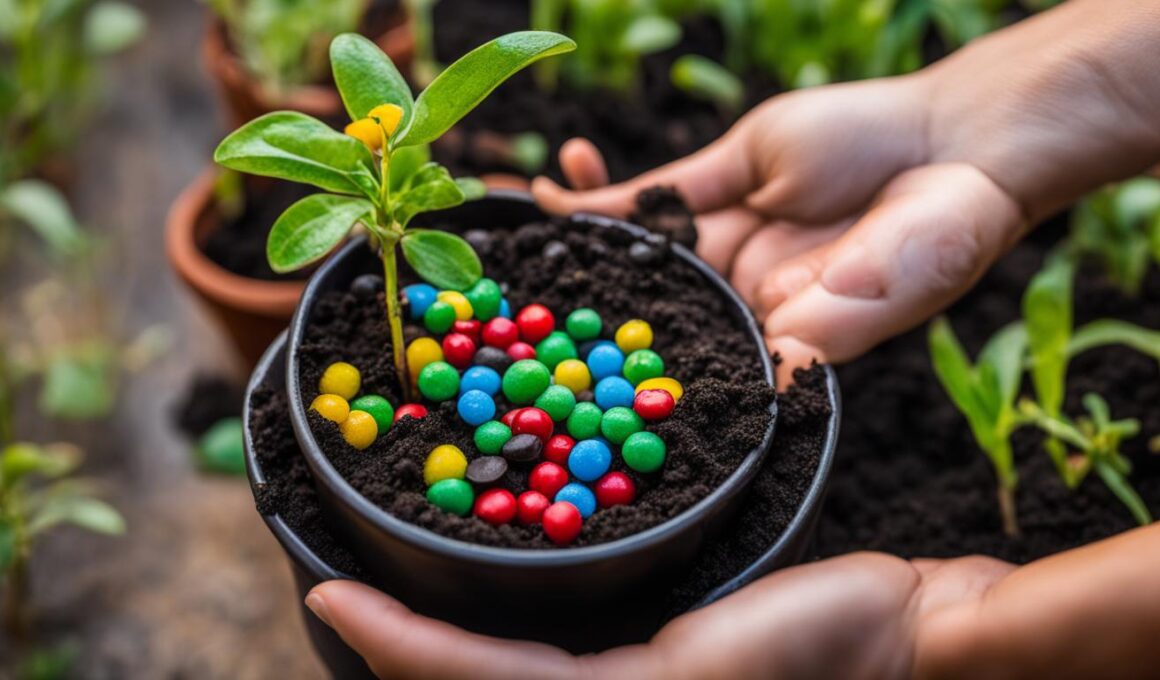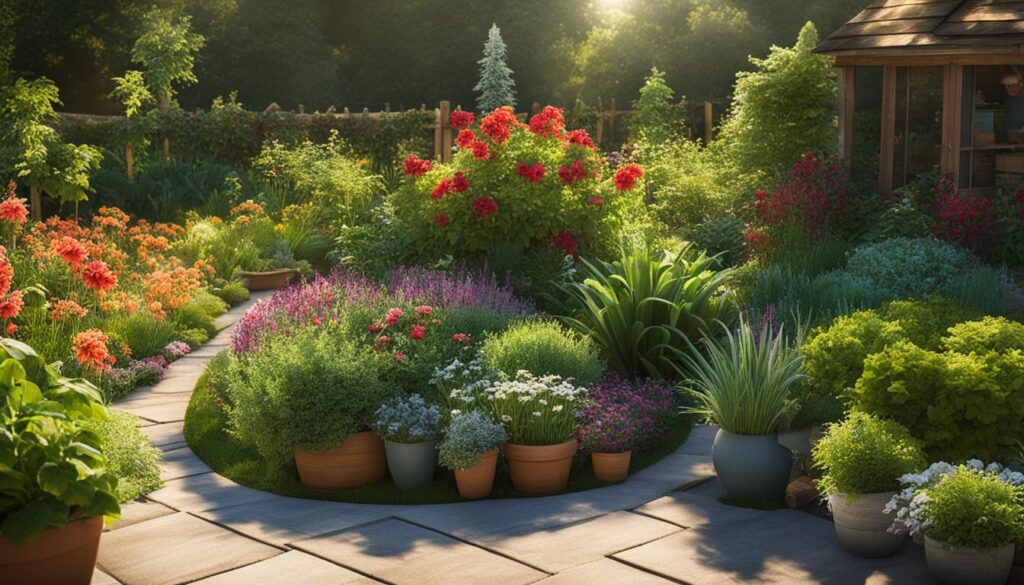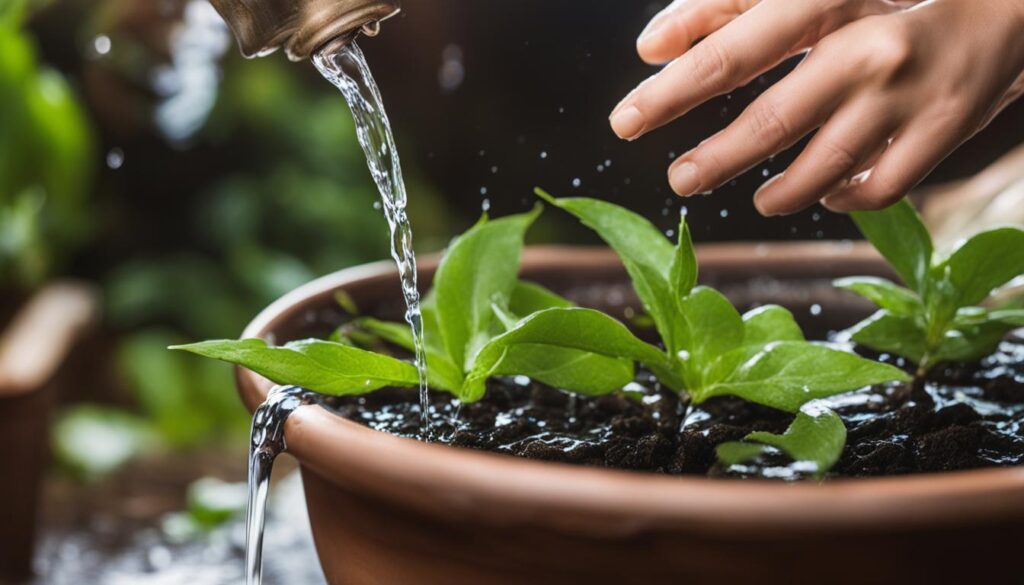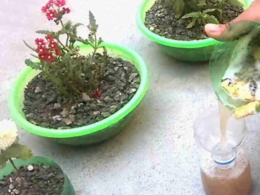Plants require essential nutrients to grow and stay healthy. Nitrogen, phosphorous, and potassium, along with several micronutrients, are the macronutrients that plants need the most. Fertilizing your plants is crucial to replenish the nutrient supply and ensure their robust growth. Different types of plants have varying nutrient requirements, so it’s important to understand the best ways to fertilize them, whether they are growing in your garden or in containers.
Regular soil testing can help determine the current nutrient situation of your yard and guide you in choosing the right fertilizer. Adding compost and organic matter to the soil can improve its nutrient content, but it may not provide nutrients fast enough. Supplementing with fertilizers that provide immediate nutrients is recommended, using either liquid or granular products with balanced proportions of nitrogen, phosphorous, and potassium (indicated by N-P-K). Fertilizing is particularly important for houseplants and container plants, as they have limited access to soil nutrients.
Key Takeaways:
- Plants need essential nutrients, including nitrogen, phosphorous, and potassium, to grow and stay healthy.
- Regular soil testing helps determine nutrient deficiencies and guide fertilizer selection.
- Compost and organic matter can improve soil fertility, but fast-acting fertilizers may be needed.
- Different plants have varying nutrient requirements, so choose fertilizers accordingly.
- Proper watering and drainage are also essential for plant health and growth.
Determining the Nutrient Needs of Your Plants
One of the essential tasks in maintaining plant health is determining the nutrient needs of your plants. This can be done through soil testing, which helps identify any nutrient deficiencies and ensures that you can address them appropriately. Soil testing is crucial because factors such as region, previous plantings, and soil composition can affect nutrient availability. Even if your soil is initially rich, it can become depleted over time due to plant nutrient absorption and leaching.
By conducting regular soil tests, you can evaluate the current nutrient levels in your soil and make informed decisions about fertilizer application. Soil tests provide specific recommendations on the type and amount of fertilizer needed, allowing you to tailor your approach to meet the nutrient requirements of your plants. It’s recommended to perform annual soil testing to account for variations in nutrient absorption by different plants.
Understanding Nutrient Deficiencies
A soil test can also reveal nutrient deficiencies in your soil. Common nutrient deficiencies include nitrogen, phosphorus, and potassium, which are the macronutrients that plants need in larger quantities. Micronutrient deficiencies can also occur, such as iron, zinc, and magnesium deficiencies. Identifying these deficiencies through soil testing enables you to take appropriate action to rectify them, whether through organic matter amendments or targeted fertilizer application.
When determining the nutrient needs of your plants, consider the organic matter content in your soil. Organic matter, such as compost, improves soil fertility and nutrient-holding capacity. It helps release nutrients slowly over time, reducing the need for frequent fertilizer applications. However, organic matter may not supply nutrients fast enough, especially for plants with high nutrient demands. In such cases, supplementing with fertilizers that provide immediate nutrients is recommended, ensuring that your plants receive a well-rounded supply of essential elements.
| Nutrient | Function | Signs of Deficiency |
|---|---|---|
| Nitrogen (N) | Essential for leaf and stem growth | Stunted growth, yellowing leaves |
| Phosphorus (P) | Facilitates root development and flower production | Poor root growth, delayed flowering |
| Potassium (K) | Aids in overall plant health and disease resistance | Leaf necrosis, weakened stems |
| Iron (Fe) | Essential for chlorophyll production | Yellowing leaves with green veins |
| Zinc (Zn) | Important for enzyme activity and growth regulation | Stunted growth, distorted leaves |
| Magnesium (Mg) | Key component of chlorophyll molecules | Interveinal chlorosis, leaf curling |
Understanding the nutrient needs of your plants and addressing any deficiencies will help ensure their healthy growth and vitality. By conducting regular soil testing, supplementing with fertilizers or organic matter amendments, and considering the specific requirements of different plants, you can create an optimal environment for your plants to thrive.
Selecting the Right Fertilizer for Different Plants
Choosing the right fertilizer for your plants is crucial to meet their specific nutrient requirements. Different types of plants have varying fertilizer needs, and understanding these requirements is essential for their healthy growth. Let’s explore the different types of plants and the fertilizers that work best for them.
Types of Plants
Plants can be categorized into two main groups: heavy feeders and others. Heavy feeders, such as annuals, fruits, vegetables, roses, and hydrangeas, require regular fertilization throughout their growing season. These plants have high nutrient demands and benefit from a general-purpose liquid fertilizer with balanced proportions of nitrogen, phosphorous, and potassium.
On the other hand, perennials, trees, and shrubs usually require less fertilizer, especially if the soil is enriched with compost or organic matter before planting. Fertilizers specifically formulated for certain plants, such as roses and hydrangeas, can provide additional benefits and address any specific nutrient deficiencies.
Slow-Release Fertilizer
Slow-release fertilizers are particularly useful for container plants and houseplants. These fertilizers provide a steady and gradual release of nutrients over an extended period, ensuring a constant supply of nutrients for the plants. Slow-release fertilizers come in various forms, including pellets, granules, and spikes.
When using slow-release fertilizers, it’s important to follow the recommended application rates and frequency to avoid over-fertilization. Over-fertilization can lead to nutrient imbalances and burn the plant’s roots, causing damage to the overall health of the plant.
Plant-Specific Fertilizers
For some plants, specialized fertilizers are available in the market. These plant-specific fertilizers are formulated to meet the unique nutritional needs of particular plants. For example, rose fertilizers contain additional nutrients like calcium and magnesium to promote healthy blooms and strong root development.
When using plant-specific fertilizers, always follow the instructions provided by the manufacturer. Applying the correct amount of fertilizer at the right time will provide the best results and ensure the optimal health and growth of your plants.
| Plant Type | Recommended Fertilizer |
|---|---|
| Annuals, Fruits, Vegetables | General-purpose liquid fertilizer with balanced N-P-K ratios |
| Roses | Plant-specific fertilizer with additional nutrients like calcium and magnesium |
| Hydrangeas | General-purpose liquid fertilizer or plant-specific fertilizer based on soil pH |
| Perennials, Trees, Shrubs | Less fertilizer needed if soil enriched with compost or organic matter |
| Container Plants, Houseplants | Slow-release fertilizer for steady nutrient supply |
Best Practices for Fertilizing Plants
When it comes to fertilizing your plants, it’s important to follow best practices to ensure their healthy growth. Over-fertilizing can be detrimental to your plants, causing root damage and leaf discoloration. On the other hand, under-fertilizing may result in nutrient deficiencies and stunted growth. To strike the right balance, here are some key tips to keep in mind:
- Use Liquid Fertilizer with Dilution: Liquid fertilizers are convenient and provide immediate nutrients to your plants. However, it’s important to dilute them to about half the recommended strength to avoid over-fertilization. This precautionary measure ensures that your plants receive the necessary nutrients without overwhelming them.
- Follow Proper Application Techniques: When applying fertilizers, it’s crucial to follow the recommended application rates and frequency specific to each type of plant. Applying too much fertilizer at once can lead to nutrient runoff and potential harm to the environment. It’s always best to err on the side of caution and apply smaller doses more frequently.
- Take Safety Precautions: Fertilizers can contain chemicals that may be harmful if mishandled. Always read and follow the package instructions carefully. Wear gloves and protective clothing when handling fertilizers, and avoid application during windy conditions to prevent drift. Additionally, store fertilizers in a safe place, out of the reach of children and pets.
By adhering to these best practices, you’ll ensure that your plants receive the right amount of nutrients for healthy growth, without risking any harm or damage.
Expert Tip
“When it comes to fertilizing, less is often more. It’s better to slightly under-fertilize your plants than to overdo it. Remember, it’s easier to correct under-fertilization than to undo the effects of over-fertilization.”
Following these practices will help you maintain the overall health and well-being of your plants, promoting robust growth and vibrant greenery.
Enhancing Plant Health through Proper Watering and Drainage
Proper watering and drainage are essential for maintaining the health of your plants and preventing issues such as overwatering and root rot. Overwatering is a common cause of plant death as it deprives the roots of oxygen and can lead to root suffocation. To avoid overwatering, it’s important to monitor soil moisture levels.
Using a moisture meter is a useful tool for gauging the moisture content in your soil. This allows you to water your plants only when necessary, preventing the soil from becoming waterlogged. Additionally, certain indoor plants, such as monsteras, anthuriums, and philodendrons, thrive in more humid environments. Using a water mister to increase humidity levels around these plants can promote their optimal growth.
When it comes to watering your plants, using a watering pot with a long spout can make the task easier and more efficient. The long spout allows for targeted watering, ensuring that water reaches the roots without damaging the leaves or flowers. It’s also important to choose pots with drainage holes to prevent excess water from accumulating in the soil. Adequate drainage allows for proper airflow in the soil, preventing waterlogging and root rot.
Key Points:
- Overwatering can lead to root suffocation and plant death.
- Using a moisture meter helps monitor soil moisture levels.
- Increasing humidity can benefit certain indoor plants.
- Using a watering pot with a long spout ensures targeted watering.
- Pots with drainage holes prevent waterlogging and root rot.
Table: Watering Tips for Different Plant Types
| Plant Type | Watering Frequency | Watering Amount | Drainage Requirements |
|---|---|---|---|
| Annuals | Regularly, when the top inch of soil is dry | Adequate water to moisten the root zone | Pots with drainage holes |
| Perennials | Sparingly, when the soil is dry a few inches deep | Less water compared to annuals | Pots with drainage holes |
| Houseplants | Varying depending on the plant species | Keep the soil evenly moist, but not waterlogged | Pots with drainage holes |
Proper watering and drainage are essential for maintaining plant health and preventing issues such as overwatering and root rot. Using a moisture meter to monitor soil moisture levels, increasing humidity for certain plants, and choosing pots with drainage holes can help create an optimal environment for your plants to thrive.
Conclusion
To ensure the thriving greenery of your plants, it is essential to understand their nutrient requirements and fertilize them accordingly. Regular soil testing, supplementing with fertilizers, and providing proper watering and drainage are key factors in maintaining plant health and promoting robust growth. By following these practices and paying attention to the specific needs of different types of plants, you can create an optimal environment for your plants to thrive. Remember to always follow product instructions and take necessary safety precautions when handling and applying fertilizers.
What specific plant feeding techniques can enhance the health and growth of my outdoor plants?
To enhance your garden oasis, consider using organic fertilizers like compost and manure for outdoor plants. Additionally, proper watering techniques and mulching can improve the health and growth of your plants. Pruning and removing pests can also contribute to the overall vitality of your garden.
FAQ
Why is fertilizing plants important?
Fertilizing plants is crucial to replenish essential nutrients and promote their robust growth.
How can I determine the nutrient needs of my plants?
Soil testing can help determine the current nutrient situation of your yard and guide you in choosing the right fertilizer.
What types of plants require regular fertilization?
Annuals, fruits, vegetables, roses, and hydrangeas are considered heavy feeders and need regular fertilization throughout their growing season.
What is the recommended frequency of soil testing?
Annual soil testing is recommended to account for varying nutrient absorption by plants and ensure proper fertilization.
Is it better to under-fertilize or over-fertilize plants?
It’s better to under-fertilize than to over-fertilize, as excess fertilizer can lead to root damage and leaf discoloration.
How can I prevent over-fertilization when using liquid fertilizers?
Diluting liquid fertilizers to about half the recommended strength can minimize the risk of over-fertilization.
What precautions should I take when handling fertilizers?
Always handle and apply fertilizers according to package directions, wear gloves, and avoid windy conditions. Store fertilizers safely, out of reach of pets and children.
How can I prevent overwatering my plants?
Using a moisture meter can help monitor soil moisture levels and prevent overwatering. Additionally, proper watering techniques and the use of pots with drainage holes are crucial for plant health.












